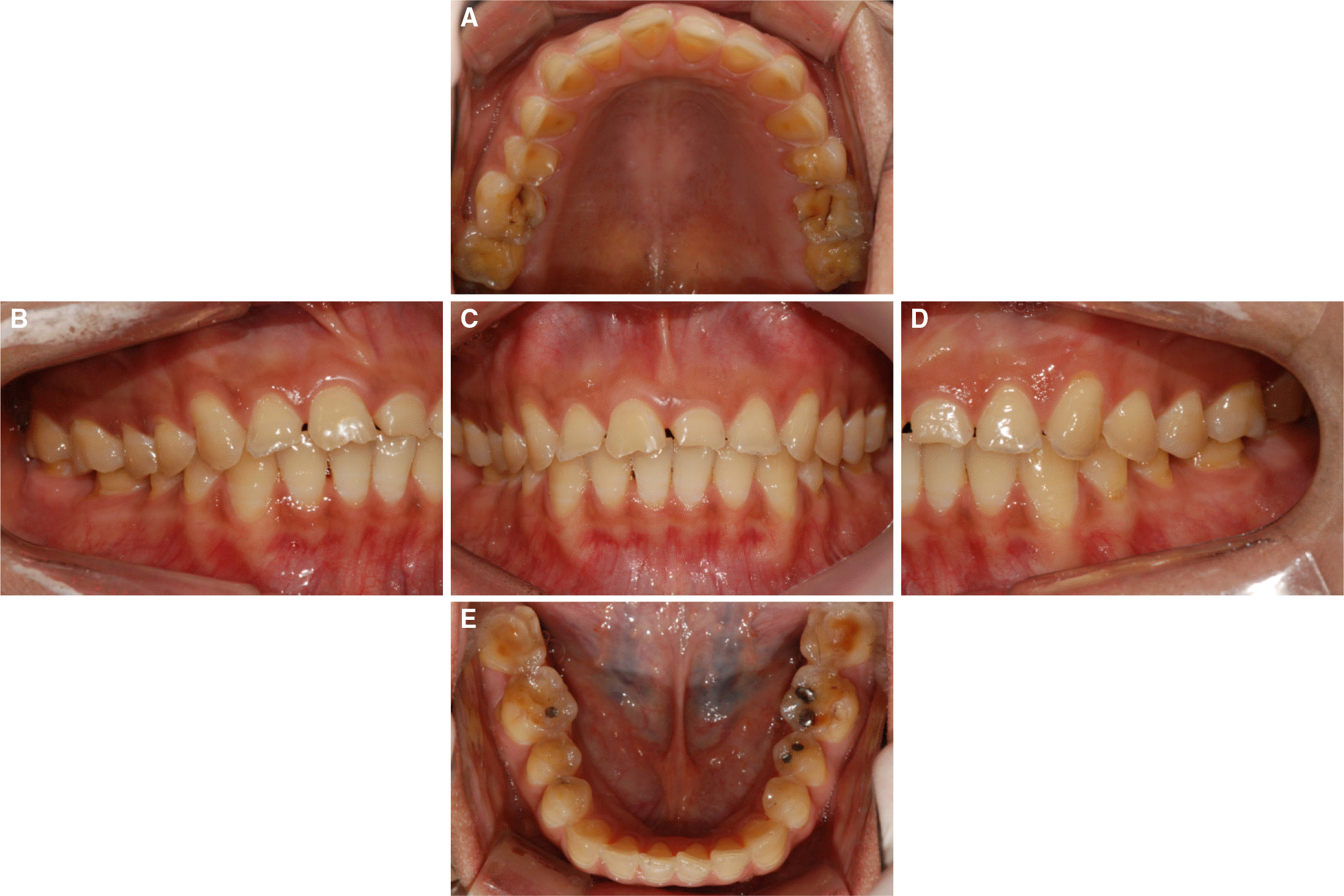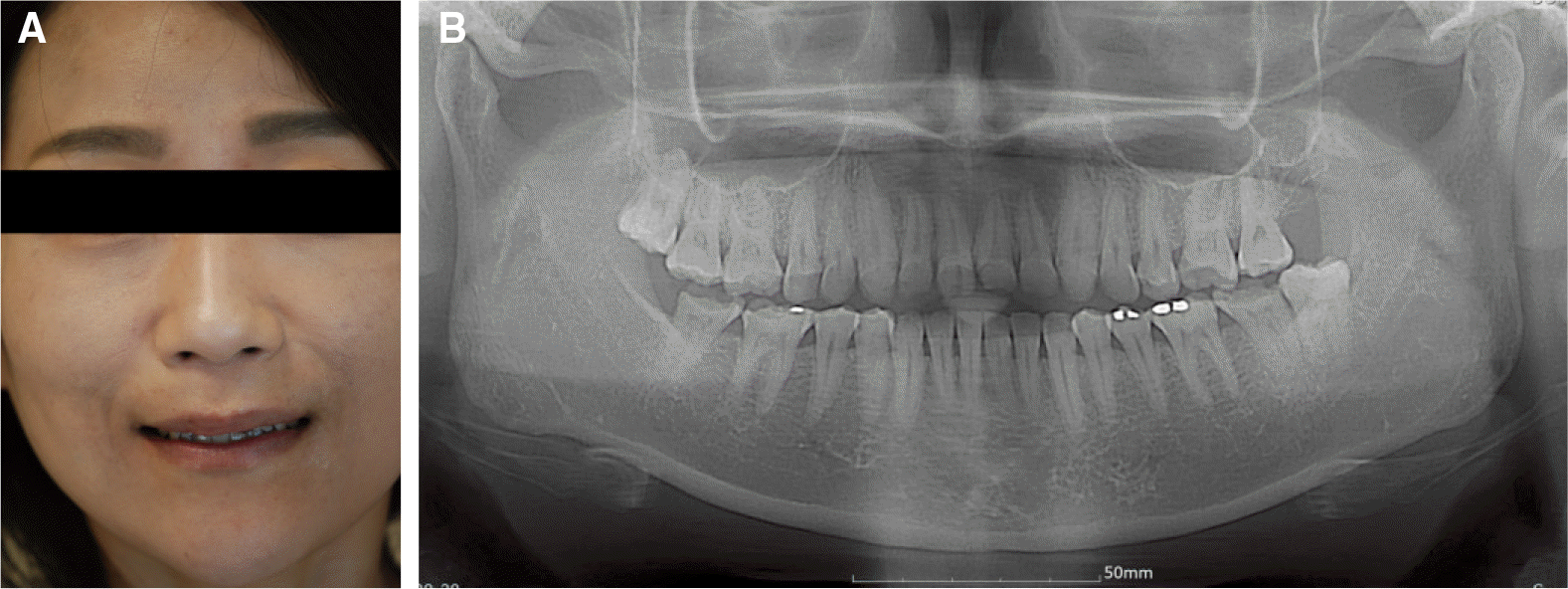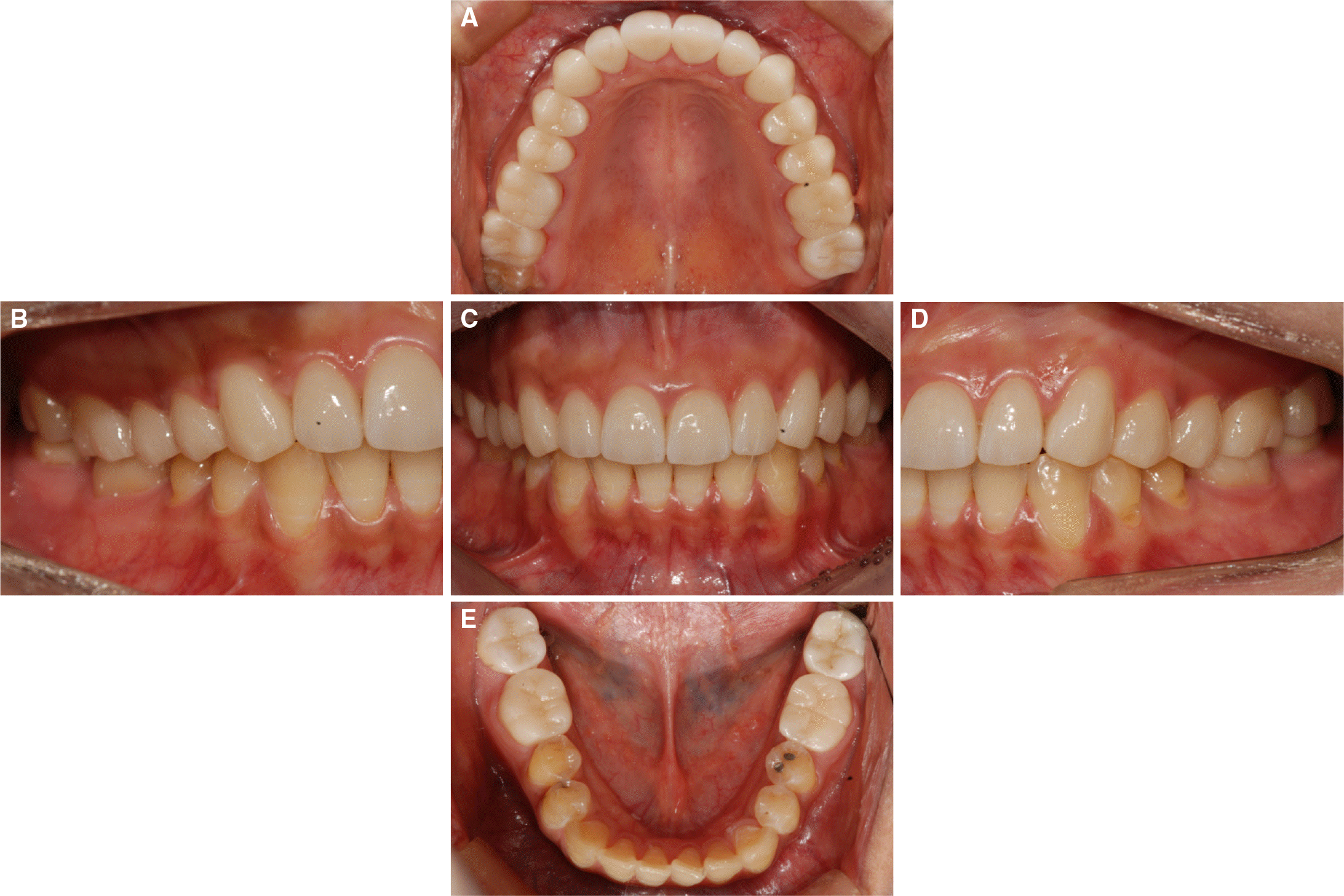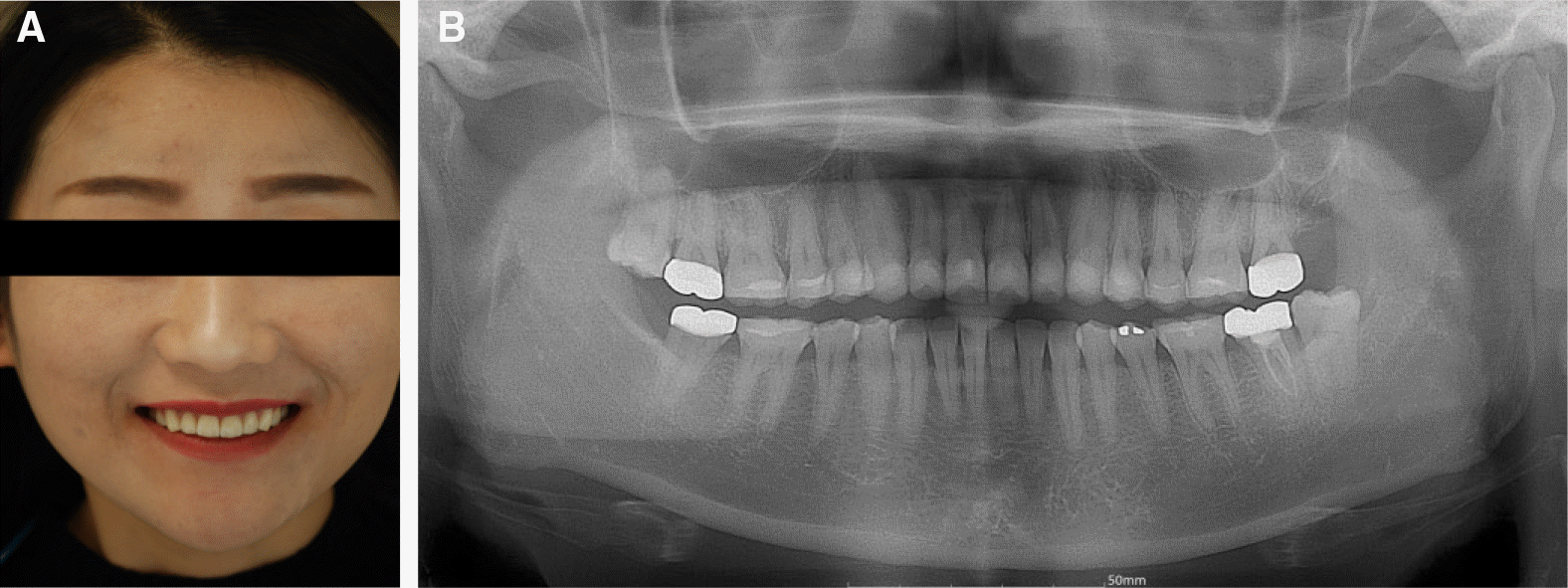Abstract
Tooth wear is known as a normal physiological process which gradually progresses. It is reported that vertical dimension can be kept stable because amount of physiologically worn loss could be compensated by growth of alveolar bone and tooth eruption. However, excessive tooth wear as pathologic wear can cause pathologic pulp, disharmony with occlusal plane, functional disorders and esthetic problems so that full mouth rehabilitation could be needed in these cases. Recovery of function and esthetic improvement should be considered for alteration of the vertical dimension. Determination of the vertical dimension of occlusion is needed to be in harmony with the neuromuscular system. This clinical report describes 36 year-old female patient who had chief complaint of severely worn dentition and esthetic discomfort. An increase of 2.0 mm at maxillary incisal edge was done to restore vertical dimension. It was based on the degree of tooth wear and esthetics. (J Korean Acad Prosthodont 2016;54:306-13)
Go to : 
REFERENCES
1.Grippo JO., Simring M., Schreiner S. Attrition, abrasion, corrosion and abfraction revisited: a new perspective on tooth surface lesions. J Am Dent Assoc. 2004. 135:1109–18.
4.Lambrechts P., Braem M., Vuylsteke-Wauters M., Vanherle G. Quantitative in vivo wear of human enamel. J Dent Res. 1989. 68:1752–4.

5.Ramfjord SP., Blankenship JR. Increased occlusal vertical dimension in adult monkeys. J Prosthet Dent. 1981. 45:74–83.

6.Smith BG., Knight JK. A comparison of patterns of tooth wear with aetiological factors. Br Dent J. 1984. 157:16–9.

7.Bartlett D., Dugmore C. Pathological or physiological erosion-is there a relationship to age? Clin Oral Investig. 2008. 12:S27–31.

8.Donachie MA., Walls AW. The tooth wear index: a flawed epidemiological tool in an ageing population group. Community Dent Oral Epidemiol. 1996. 24:152–8.

9.Verrett RG. Analyzing the etiology of an extremely worn dentition. J Prosthodont. 2001. 10:224–33.

10.Muts EJ., van Pelt H., Edelhoff D., Krejci I., Cune M. Tooth wear: a systematic review of treatment options. J Prosthet Dent. 2014. 112:752–9.
11.Mehta SB., Banerji S., Millar BJ., Suarez-Feito JM. Current concepts on the management of tooth wear: part 1. Assessment, treatment planning and strategies for the prevention and the passive management of tooth wear. Br Dent J. 2012. 212:17–27.

12.Mehta SB., Banerji S., Millar BJ., Suarez-Feito JM. Current concepts on the management of tooth wear: part 2. Active restorative care 1: the management of localised tooth wear. Br Dent J. 2012. 212:73–82.

13.Mehta SB., Banerji S., Millar BJ., Suarez-Feito JM. Current concepts on the management of tooth wear: part 3. Active restorative care 2: the management of generalised tooth wear. Br Dent J. 2012. 212:121–7.

14.Mehta SB., Banerji S., Millar BJ., Suarez-Feito JM. Current concepts on the management of tooth wear: part 4. An overview of the restorative techniques and dental materials commonly applied for the management of tooth wear. Br Dent J. 2012. 212:169–77.

Go to : 
 | Fig. 1.Pre-treatment state. (A) Maxillary occlusal view, (B) Right lateral view, (C) Frontal view, (D) Left lateral view, (E) Mandibular occlusal view. |
 | Fig. 2.(A) Frontal view of facial photograph before treatment, (B) Panoramic radiograph before treatment. |
 | Fig. 3.(A) Measurement of worn loss, (B) Mounted diagnostic model, (C) An increase of 2.0 mm in vertical dimension. |
 | Fig. 4.Diagnostic wax up. (A) Maxillary occlusal view, (B) Frontal view, (C) Mandibular occlusal view. |
 | Fig. 5.(A) 1st provisional restoration with guideline for modification, (B) 2nd provisional restoration after gingivoplasty, (C) Customized incisal guide table. |
 | Fig. 6.Bisque bake crown after occlusal adjustment. (A) Maxillary occlusal view, (B) Frontal view, (C) Mandibular occlusal view. |




 PDF
PDF ePub
ePub Citation
Citation Print
Print




 XML Download
XML Download